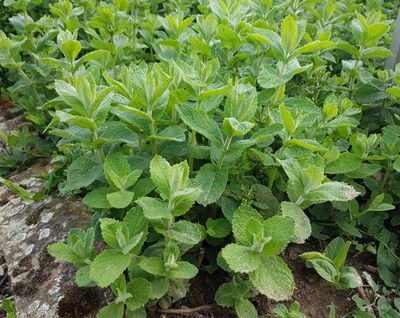About Apple Mint Plants
Europeans introduced this member of the mint family to America where it has been embraced as a garden plant including many cultivars. Reaching about 2 feet (.60 m.) at maturity, apple mint plants have woolly stems, fragrant serrated leaves and terminal spikes that bear white or light pink flowers beginning in late summer or early fall.
How to Grow an Apple Mint Herb
Apple mint, known endearingly by some as the “fuzzy mint” or “woolly mint,” can be planted from seed or plant and it propagates easily by cuttings. Since apple mint can be invasive, it is wise to consider confining the plants to a container. You can put the plant in a container and then bury the container. Rich soil that drains well and has a pH of 6.0. to 7.0 is best. If spreading is not an issue, you can plant directly into the ground. This mint likes part shade to part sun locations and is hardy in USDA plant hardiness zones 5 through 9. Consider planting apple mint alongside cabbage, peas, tomatoes and broccoli to improve their flavor.
Apple Mint Care
Provide water for early plants and during times of drought. Caring for established apple mint is not overly taxing. Large areas can be easily mowed to keep under control. Smaller plots or containers are healthiest if cut back a few times each season. In the fall, cut back all apple mint to the ground and cover with a 2-inch (5 cm.) layer of mulch where winters are harsh.
Apple Mint Uses
Growing apple mint is a lot of fun, as you can do so many things with it. Bruised apple mint leaves added to a pitcher of ice water with lemon make the perfect “afternoon in the shade” summer treat. Dried apple mint leaves are a delicious warm tea that is perfect for cooler weather. For drying, harvest the leaves when they are fresh by cutting the stalks just before they bloom. Hang the stalks to dry and store them in airtight containers. Use fresh leaves as a pretty and fragrant dessert topping, as salad additions or to make tasty apple mint dressings.
